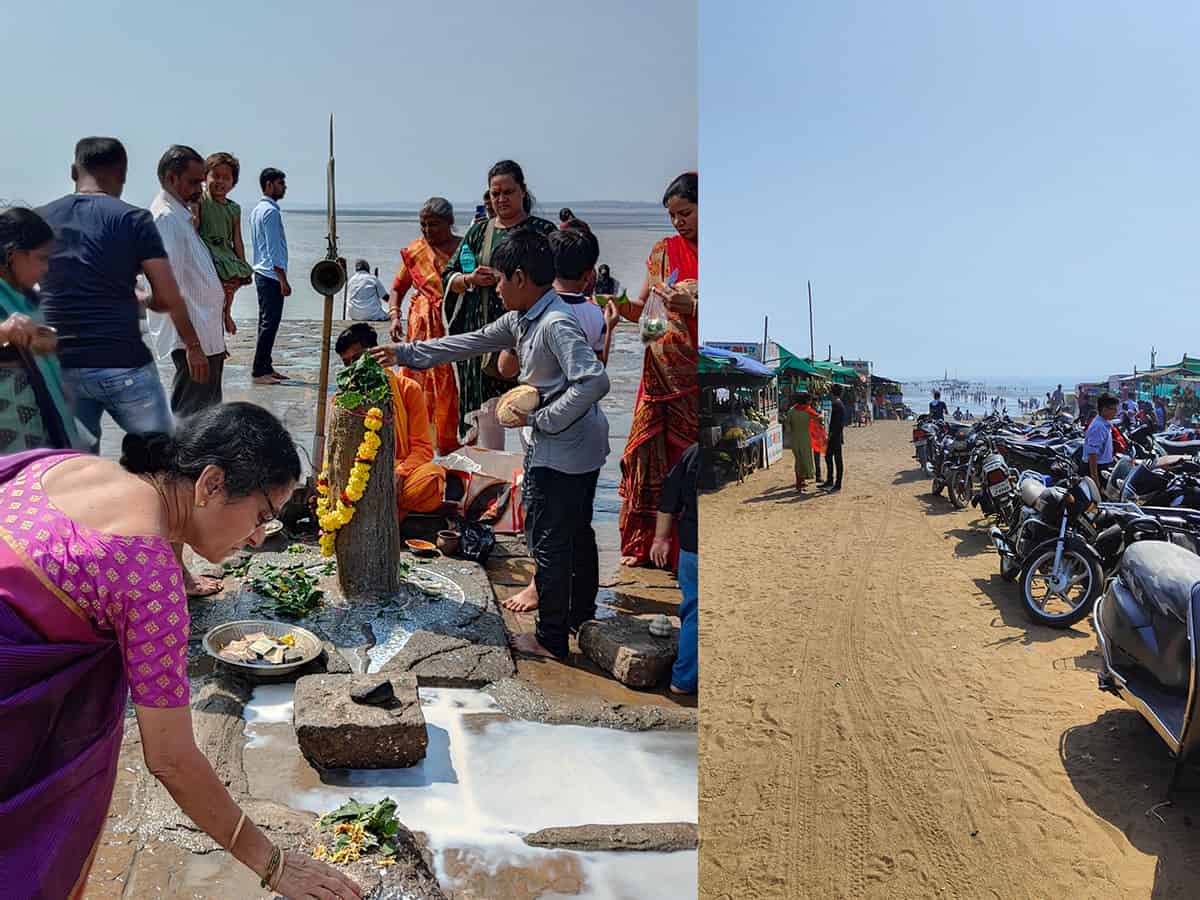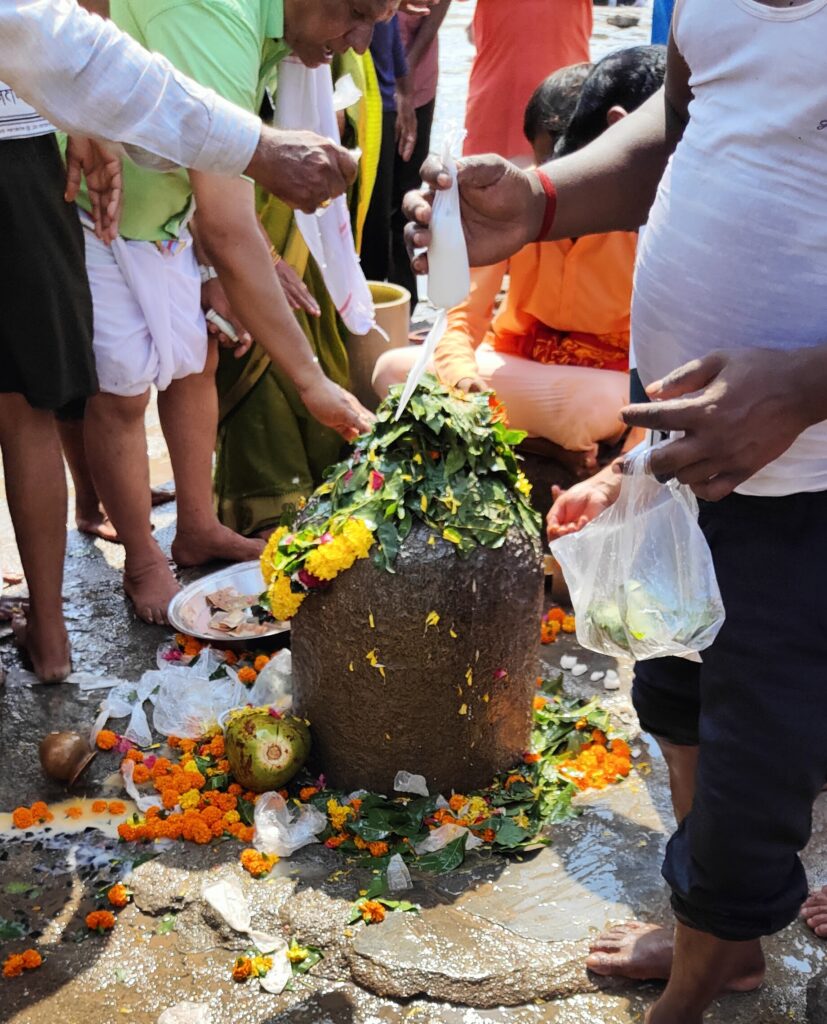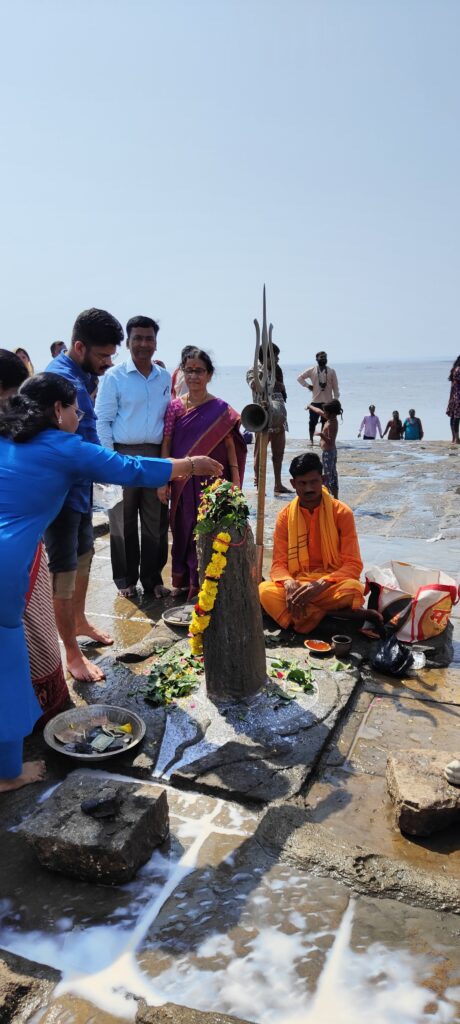
Hyderabad: Have you ever seen the sea withdrawing daily for devotees to offer prayers to Lord Shiva? Call it a natural phenomenon or a miracle but it happens daily.
Nishkalank Mahadev Temple in the Arabian Sea near Koliyak beach/village in Bhavnagar of Gujarat State is one of the rare sea temples visited by thousands of pilgrims from all over the country and aboard.
Interestingly, the Sea withdraws almost every day paving the way for pilgrims to offer prayers at the temple and return back to shore!
Located about one km into the sea, the temple dedicated to Lord Shiva can be visited only during low tides since the temple submerges during high tides.
Normally, it is open to the public from 5-00 am to 6-00 pm on all days depending on the weather conditions.
Devotees have to walk barefoot across the sea through the muddy and sluggish sea bed from the seashore to reach the temple.
Scores of young and old make it to the temple daily.

Nishkalank Mahadev Temple located on a small island has five distinct swayambhu Shiva lingams on a square platform and each is having a Nandi statue facing it.
We were asked to visit the temple before 4 pm and return to sea shore since the temple is submerged during high tides in the sea, most likely in the evenings. The temple is located 28 km from Bhavnagar.
As one reaches the temple, the devotees pour milk and curd on the Shiva Lingam besides offering flowers and fruits. Priests chant Vedic hymns. All the offerings are available at the shops on the seashore.
It is believed those who visit the temple get their sins washed away.
Interestingly, the temple remains a mystery and an engineering marvel as to how it could withstand high tides of the sea and remain submerged most of the time.
During the high tide, the idol of Lord Nishkalank Mahadev and other idols are submerged and one can see only the flag and a pillar from the shore.
The temple has an interesting tale. The story goes that Pandavas built the temple after the Kurukshetra war. According to legend, after killing all the Kauravas, the Pandavas felt guilty and thought they committed a sin.
To discover reclamation for their sins, Pandavas sought Lord Krishna’s help who is said to have handed them a black flag and a black cow, and asked them to trail and said when both the flag and the cow turn white, they will all be forgiven.
Lord Krishna also asked them to apologise to Lord Shiva after that. They followed the cow everywhere it took them and acknowledged the flag for many years to various places, yet the shades did not change.

Finally, when they reached Koliyak Beach in Gujarat, both turned white. Elated Pandavas sat and meditated to Lord Shiva and apologised for the sins committed by them.
Impressed by their devotion, Lord Shiva showed up in lingam form to each brother and 5 Swayumbhu lingams emerged. They named it as Nishkalank Mahadev which means being spotless, clean, and innocent.
The annual ‘Bhadarvi’ fair is held here on the Amavasya (new Moon night) in the month of Shravan attracting thousands of devotees.
The Nishkalank Mahadev temple festival begins with the hoisting of the flag by the Maharajas of Bhavnagar where this flag is on throughout the year and is changed only at the next temple festival.
Locals say the flag never falls or washes away despite occasional ferocious tides. It also withstood the deadly earthquake in 2001.
Devotees visit the temple by walking barefoot from the shore during the low tide. They first wash their hands and legs in a pond called Pandavas Pond, upon reaching the temple and then visit the shrine.
According to locals, the tides are active, especially during Amavasya (new moon) and Poornima (full moon) and devotees eagerly wait for the tides to disappear on these days.
Some families place the ashes of their loved ones in the sea waters here in the belief that the dead one attains salvation or moksha.
It’s easy to reach the temple from all over Gujarat– Rajkot (4 hours), Ahmedabad (4 hours), Vadodara (5 hours and Palitana (2 hours).



